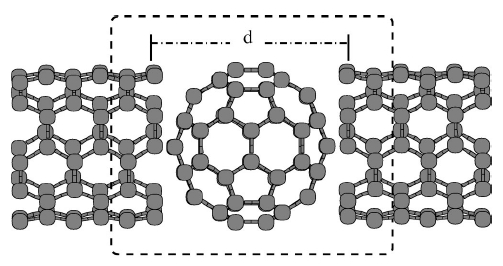We study electron transport across a carbon molecular junction consisting of a C60 molecule sandwiched between two semi-infinite metallic carbon nanotubes. It is shown that the Landauer conductance of this carbon hybrid system can be tuned within orders of magnitude not only by varying the tube-C60 distance, but more importantly at fixed distances by (i) changing the orientation of the Buckminsterfullerene or (ii) rotating one of the tubes around its cylinder axis. Furthermore, it is explicitly shown that structural relaxation determines qualitatively the transmission spectrum of such devices.

We study electron transport across a carbon molecular junction consisting of a C60 molecule sandwiched between two semi-infinite metallic carbon nanotubes. It is shown that the Landauer conductance of this carbon hybrid system can be tuned within orders of magnitude not only by varying the tube-C60 distance, but more importantly at fixed distances by (i) changing the orientation of the Buckminsterfullerene or (ii) rotating one of the tubes around its cylinder axis. Furthermore, it is explicitly shown that structural relaxation determines qualitatively the transmission spectrum of such devices.
